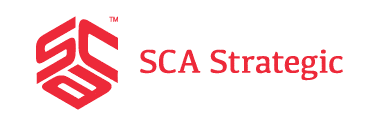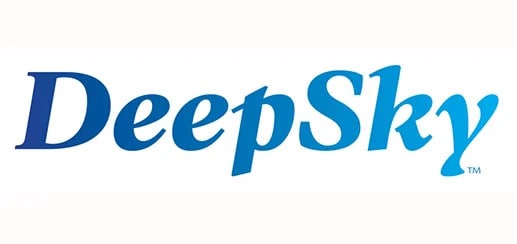When streamlining business operations, understanding the distinctions between warehouse and inventory management is crucial. Both play pivotal roles in ensuring a company’s efficiency and customer satisfaction. While warehouse management primarily focuses on the overall logistics and optimization of the physical space, inventory management delves into the systematic tracking and control of stocked goods.
An essential component of inventory management is implementing an inventory management system, a powerful tool that enables businesses to monitor stock levels, reorder products, and maintain a seamless supply chain. In this article, we will explore what a warehouse management system is and its difference from inventory management. We will shed light on their unique functions and highlight the significance of an inventory management system in modern business practices.
What is Warehouse Management?
Warehouse management involves efficiently managing and controlling all aspects of a warehouse’s operations, including inventory tracking, order fulfillment, and storage optimization. It ensures products are stored in the right place, picked and packed accurately, and delivered to customers on time. For example, efficient warehouse management in an online retail warehouse ensures products are organized systematically, enabling quick retrieval, packing, and shipping of customer orders.
What is the Role of a Warehouse Management System (WMS)?
A Warehouse Management System (WMS) is a software solution designed to streamline and optimize warehouse strategies. It efficiently manages inventory tracking, order processing, and shipping, ensuring precise control over stock levels and improving overall efficiency. WMS employs advanced algorithms to enhance picking, packing, and shipping processes, minimizing errors and maximizing productivity. Knowing what WMS is will help provide real-time data and insights. It will empower your businesses to make informed decisions, reduce costs, and enhance customer satisfaction, making it a fundamental tool for modern warehouse operations.
What is Inventory Management?
Inventory management is the systematic process of overseeing, controlling, and optimizing a company’s stocked goods. It involves tracking inventory levels, restocking products, and ensuring items are available when needed while minimizing excess or obsolete stock. Effective inventory management enables businesses to meet customer demands efficiently, reduce carrying costs, and enhance profitability.
What is the Role of Inventory Management System?
An Inventory Management System (IMS) is a pivotal software tool in optimizing a company’s inventory-related tasks. It facilitates precise tracking of stock levels, monitors product sales, and automates reorder processes. By providing real-time insights into inventory movement and trends, an IMS enables businesses to make data-driven decisions, prevent stockouts, reduce excess inventory, and enhance overall operational efficiency.
What Do Inventory Management and Warehouse Management Have in Common?
Inventory management and warehouse management focus on optimizing the handling, storage, and movement of goods within a business. They share a common goal of maintaining optimal stock levels to prevent overstocking or understocking. Both functions rely on accurate tracking methods and technology integration to streamline operations, reduce costs, and meet customer demands effectively. Utilizing real-time data and advanced software solutions allows businesses to enhance overall efficiency and responsiveness in their supply chain operations.
What are the Key Differences between Warehouse Management versus Inventory Management?
Before diving into the specific differences, it’s essential to understand the unique aspects that distinguish warehouse management from inventory management. Let’s explore these distinctions:
Focus of Warehouse Versus Inventory Management
- Warehouse Management: Primarily deals with the physical storage, organization, and movement of goods within a warehouse.
- Inventory Management: Track stock levels, reordering processes, and optimizing inventory turnover.
Scope of Warehouse Versus Inventory Management
- Warehouse Management: Encompasses broader logistical operations, including order fulfillment, shipping, and space utilization.
- Inventory Management: Focuses specifically on inventory tracking, demand forecasting, and supply chain optimization.
Technology Use of Warehouse Versus Inventory Management
- Warehouse Management: Involves automation, RFID systems, and robotics for efficient warehouse processes.
- Inventory Management: Relies on inventory management software, demand forecasting tools, and data analytics for inventory optimization.
Goals of Warehouse Versus Inventory Management
- Warehouse Management: Aims to improve warehouse efficiency, reduce errors, and enhance order fulfillment speed.
- Inventory Management: Aim to minimize carrying costs, prevent stockouts, and improve overall inventory accuracy.
What are the Benefits of Integrating Warehouse and Inventory Management?
Integrating warehouse and inventory management systems offers several advantages:
- Enhanced Visibility: Seamless integration provides real-time visibility into inventory levels, order status, and warehouse operations, enabling better decision-making.
- Optimized Stock Levels: Businesses can maintain optimal stock levels, reducing excess inventory and minimizing stockouts, improving customer satisfaction.
- Efficient Order Fulfillment: Integration streamlines order processing, picking, and packing, leading to faster and more accurate order fulfillment services and enhancing customer experience.
- Cost Savings: Eliminates inefficiencies, reduces operational warehouse costs, minimizes carrying expenses, and optimizes warehouse space.
- Reduced Errors: Automation minimizes manual handling, reducing the risk of errors in order processing, inventory tracking, and shipment, ensuring higher accuracy.
- Improved Scalability: Integrated systems can adapt to changing business needs, allowing businesses to scale operations seamlessly without disruptions.
- Data-Driven Decisions: Access to comprehensive data analytics enables businesses to analyze trends, forecast demands, and make informed decisions, enhancing overall efficiency and profitability.
Optimize Your Operations with Warehouse and Inventory Management Solutions!
Elevate your business to new heights! Supercharge your operations with our Warehouse and Inventory Management solutions, designed to boost efficiency and drive growth.
Let’s revolutionize your business together! Contact us now and embark on a journey to seamless operations and unmatched success. Don’t wait – transform your business today!
FAQs about Warehouse Management versus Inventory Management
How Do I Start Warehouse Management?
To begin warehouse management, assess your inventory needs, invest in a reliable Warehouse Management System (WMS), organize your warehouse layout efficiently, and train your staff on proper handling and tracking procedures.
What are the Three Main Aspects of Inventory Management?
The three main aspects of inventory management are maintaining accurate stock levels, optimizing reorder processes, and ensuring efficient demand forecasting. By focusing on these areas, businesses can effectively balance supply and demand, minimizing costs and maximizing customer satisfaction.
How Do You Use an Inventory Management System?
An Inventory Management System involves inputting product information, monitoring stock levels in real time, setting reorder points, and utilizing data analytics for informed decision-making. Regularly updating the system, conducting audits, and integrating it with other business tools enhance its effectiveness, enabling businesses to manage inventory seamlessly and reduce operational complexities.















 View More
View More